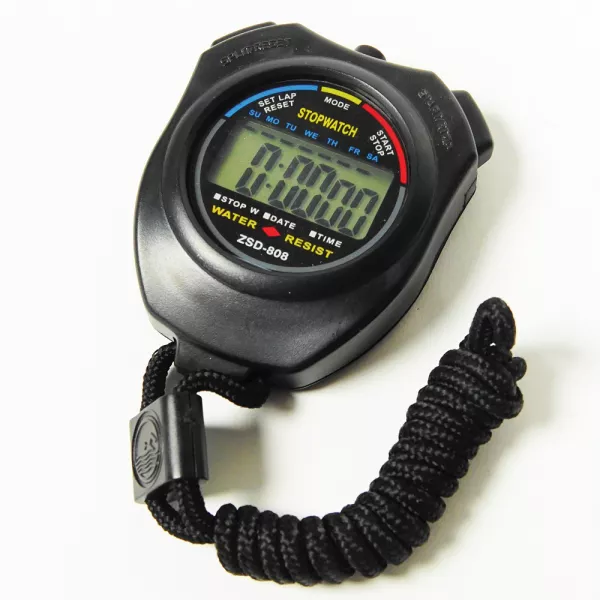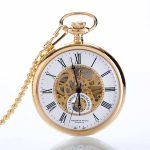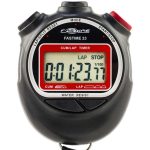Introduction to Stop Watches in Workouts
Incorporating a stop watch into your workouts can revolutionize your exercise routine. Understanding how to use a stop watch is crucial for anyone looking to improve their fitness levels. Stop watches help in tracking performance, measuring progress, and setting goals. They are especially beneficial for interval training, where precise timing is key.
When you learn how to use a stopwatch effectively, you can properly manage your workout segments. This enables you to alternate between high-intensity exercises and rest periods accurately. Moreover, using a stop watch puts you in control of your workout pace, ensuring you stick to your planned exercise duration.
Another advantage of using a stopwatch during physical activity is its ability to promote self-discipline. It’s easy to lose track of time and overdo a particularly strenuous part of your routine without a timing device. A stop watch acts as an impartial monitor, nudging you to start or stop at the right moments, which helps prevent burnout and injury.
For individuals embarking on fitness journeys, mastering how to use a stopwatch can be a game-changer. It’s not just a tool for athletes but for anyone aspiring to get the most out of their workouts. In the following sections, we’ll cover the essential features to look for, provide a step-by-step guide on operating a stopwatch, and share advanced techniques to further enhance your workout experience.
Essential Features of a Stop Watch for Effective Workouts
When aiming to improve workouts, it’s important to choose a stop watch with the right features. These are some key elements you should look for that can make or break your exercise progress:
- Durability: A good stop watch must withstand sweat and frequent handling.
- Water Resistance: If you’re likely to train in the rain or swim, water resistance is a must.
- Lap Memory: This allows you to track performance over multiple laps or exercises.
- Large Display: You should be able to read the time quickly and easily at just a glance.
- Accuracy: Look for stop watches that guarantee precision to the smallest fraction of a second.
- Interval Timers: This feature enables you to set custom workout and rest periods.
- Alarm Functionality: An alarm can signal when to start or stop an exercise or rest period.
- Comfortable Strap/Clip: You’ll need an easy way to carry your stop watch during workouts.
Knowing how to use a stopwatch effectively includes understanding these functions. With them, you can tailor your workout to your specific goals and measure your progress accurately.
Step-by-Step Guide to Operating a Stop Watch
Learning how to use a stop watch is straightforward. Here’s a simple guide to get you started:
- Start/Stop Button: Locate the start/stop button. Press it to begin timing your workout segment.
- Lap Button: If you need to record laps or splits, press the lap button. This marks the time without stopping the overall chronometer.
- Reset Button: To clear the current time, press the reset button. This usually stops the watch if it’s running.
- Memory Function: Access the memory function to view recorded times. This is essential for tracking progress over multiple sessions.
- Set Intervals: If your stop watch has an interval timer, set the work and rest durations before starting your routine.
- Alarm Set-Up: Use the alarm function to signal the end of an interval or workout. Ensure it’s audible over any background noise.
Practice these steps repeatedly to become quick and efficient. Soon, operating your stopwatch will feel like second nature during your workouts.
Advanced Stop Watch Techniques for Interval Training
Interval training boosts fitness by alternating high-intensity workouts with rest. A stop watch is vital for this. Use advanced techniques to enhance interval workouts with a stop watch.
Set Repeat Intervals: Most stop watches allow you to program repeating timers. Set intervals for your work and rest periods to keep consistent pacing.
Track Cumulative Time: Use the stop watch to record total exercise time. This helps in understanding your overall workout duration and intensity.
Countdown Timer: Some stop watches have countdown features. Set them for your high-intensity intervals to stay focused and push limits.
Review Lap Times: After exercise, look back at lap times. Analyze your performance to identify areas for improvement.
Progressive Training: Increase your workout intensity gradually over weeks. Use the lap function to track and compare the progress you make.
By mastering these advanced techniques, elevating your interval training is within reach. Remember, how to use a stop watch effectively can make a big difference in fitness gains.
Tips for Incorporating a Stop Watch into Your Exercise Routine
Incorporating a stop watch into your exercise routine can significantly boost your workout’s efficiency and help you achieve better results. Here are some tips to seamlessly integrate a stop watch into your fitness regimen:
- Start Simple
Begin by using your stop watch for the most basic workouts. Time your runs or track how long you spend on different exercises. As you get comfortable, introduce more complex tracking.
- Consistency is Key
Use your stop watch in every workout. Consistency helps you form a habit and provides reliable data you can use to assess your progress.
- Set Clear Goals
Before working out, determine what you want to achieve with your stop watch. It could be improving your lap time or ensuring you stick to preset rest periods.
- Be Flexible With Intervals
Adjust rest and high-intensity intervals based on how you feel each day. Your stop watch can help you maintain flexibility while staying on track.
- Keep It Accessible
Attach the stop watch to your wrist, clip it on your clothes, or place it where you can easily see it. This ensures you can quickly start and stop the timer when necessary.
- Use Alarms Wisely
Alarms can be a great way to remind you to switch exercises or to take a break. Set alarms to keep your workout on schedule.
- Reflect on Your Sessions
After your workout, take time to review the times you’ve recorded. Reflecting on these can guide you in tweaking your routine for better outcomes.
- Combine With Other Tools
Pair your stop watch with a workout diary or an app. This can provide a comprehensive view of your routine and improvement.
Remember, learning how to use a stop watch effectively is about more than just pressing buttons; it’s also about making smart, purpose-driven decisions during your workouts. By following these tips, you’ll be well on your way to maximizing the benefits of every gym session.
Avoiding Common Mistakes When Using a Stop Watch
While learning how to use a stop watch can vastly improve your workout routine, it’s easy to slip into common mistakes that can impact the effectiveness of your training. Paying attention to these potential pitfalls is as important as the workout itself. Here are some common mistakes to avoid:
- Ignoring Warm-up and Cool-down: Always start with a warm-up and end with a cool-down. Use your stop watch to time these essential parts of your workout to avoid injury.
- Obsessing Over Time: Don’t let the focus on timing disrupt your form or breathing. Good technique is more important than shaving a few seconds off your time.
- Forgetting to Reset: Before starting a new segment or repeating a set, ensure your stop watch is reset. This helps maintain accurate records of your intervals.
- Not Using the Lap Feature: If your stop watch has a lap memory, use it. Skipping this feature can mean missing out on valuable split-time data.
- Setting Rigid Intervals: While consistency is key, being too rigid with intervals can be harmful. Listen to your body and adjust the intervals as needed.
- Over-Dependence: Relying solely on the stop watch can be a setback. Balance its use with how your body feels during exercise.
By being mindful of these mistakes and learning how to use a stop watch properly, you can ensure you’re getting the maximum benefit from every workout session.
Tracking Your Progress with a Stop Watch
To effectively track progress in your workouts using a stop watch, follow these steps:
- Record Regularly: Each session, use the stopwatch to track your exercise durations.
- Compare Sessions: After several workouts, compare times to assess improvements or identify plateaus.
- Set Personal Bests (PBs): Aim to beat your best times. This motivates you to push harder.
- Use Data for Goal-Setting: Analyze your times and set realistic goals for forthcoming sessions.
- Monitor Consistency: Regular timing helps ensure you maintain a consistent workout intensity.
- Celebrate Milestones: When you reach a new PB or goal, acknowledge your success.
Using a stopwatch for tracking helps you see tangible evidence of your fitness journey. It allows you to recognize patterns in performance and make data-driven decisions about your routine. Whether you want to increase speed, build endurance, or monitor weight loss, a stopwatch is a great ally. It serves as an objective observer, holding you accountable to the timelines and goals you set for yourself.
Remember that improving in fitness is not only about beating records but also about consistent growth. Use the insights gained from your stopwatch to adjust your workout plan as needed. The key is not to focus solely on the numbers but to understand what they say about your overall health and fitness levels.
Choosing the Right Stop Watch for Your Fitness Goals
Picking the right stop watch is vital for meeting your fitness targets. Here are steps to ensure you choose the best one for your needs:
- Assess Your Requirements: Think about your workout regime. Do you need simple functions or advanced programming?
- Research Brands: Look for reliable brands with good reviews. Top brands offer durable and precise devices.
- Check Features: Match the stopwatch features with your workout goals. Interval timers might be essential if you do high-intensity interval training.
- Consider Ease of Use: Select a stopwatch that is straightforward to operate. Complex devices can distract from your workout.
- Budget Wisely: Don’t overspend, but invest in quality that withstands regular use.
- Test for Comfort: Make sure it’s comfortable to wear or carry during exercise.
- Verify Water Resistance: If you’re into water sports or sweat a lot, ensure it’s water-resistant.
- Review Battery Life: Long battery life is convenient. It means less worrying about the device dying mid-workout.
Choosing a stop watch aligned with your fitness objectives is crucial. It’s not just a matter of preference, but functionality. Whether it’s for simple jogging or complex training programs, the right stopwatch can make all the difference. By focusing on these factors, you’ll facilitate progress and ensure that your timed workouts lead to the results you aspire to achieve.




